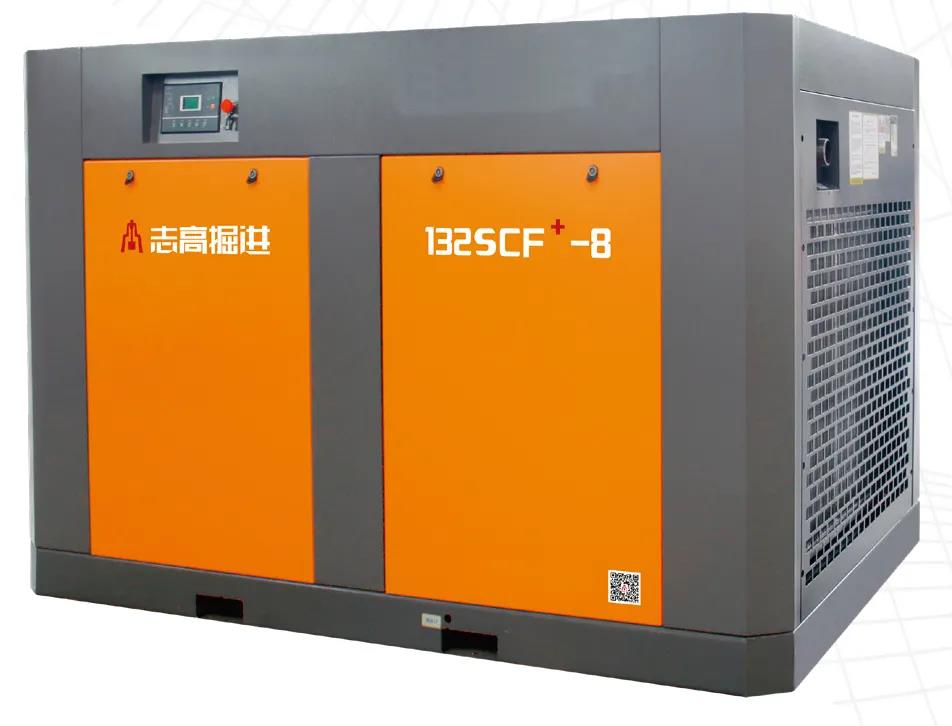Air compressor operating procedures
Air compressor operating procedures
- Preparation before driving
(1) Keep the oil pool lubricating oil within the scale range, and the grade of the lubricating oil should meet the requirements.
(2) Check the oil amount in the oiler, it should not be lower than the scale line.
(3) Before driving, turn the manual wheel to fill the cylinder with oil, and even and sufficient oil droplets should be seen from the oil sight.
(4) After assembly or regular parking, it must be checked by cranking before driving for the first time to check whether there is any abnormal noise or other abnormal conditions.
(5) Remove all objects that hinder the work on and near the machine.
(6) Check whether the exhaust pipeline is smooth and whether the air release valve is open.
(7) In order to reduce the load at startup, the unloading valve should be closed or the oil-water blow-off valve should be opened to keep the discharge pipeline in a pressure-free state.
(8) Open each cooling water valve, the water flow should be smooth and there should be no air bubbles.
(9) Preparations for the electrical part should be done before driving. - Drive
(1) Turn on the current to make the air compressor run under no-load state.
(2) After the no-load operation is normal, gradually open the unloading valve and close the oil and water blow-off valves of the coolers at all levels, so that the air compressor operates under the load state. - Run
(1) The lubricating oil pressure and exhaust pressure should not exceed the specified range, otherwise the pressure regulator should be checked.
(2) Check that the lubricating oil of the oil pool and the oiler should be within the scale range, and the oil spill should not exceed the specified range.
(3) The cooling water should be smooth, uniform, no intermittent, no bubbles, and the water temperature should not exceed 40.
(4) The exhaust temperature does not exceed 160 ports, and the temperature after water cooling does not exceed 40 ports.
(5) Check whether the current, voltage and temperature of the motor are normal.
(6) Check whether the suction valve cover is hot and whether the sound of the valve is normal.
(7) After running for 2 hours, the oil and water blow-off valves at all levels should be opened and blown out, and the oil and water in the steam storage tank should be discharged 1~2 times per shift.
(8) Keep the air filter clean, it should be cleaned once a month.
(9) Record the running situation once per hour, and keep the surroundings of the equipment clean. .
(10) Stop immediately if the following conditions are found during operation: the lubricating oil is interrupted; the cooling water is interrupted; the exhaust pressure at the outlet suddenly rises, and the safety valve fails; there is abnormal noise in the air compressor or motor; 0 motor or electrical equipment Wait for an exception to occur. - Normal parking
(1) Close the unloading valve, open the coolers at all levels and the oil-water blow-off valve.
(2) Turn off the power and stop the machine.
(3) Close the cooling water inlet valve, drain the cylinder liner and the water stored in the coolers at all levels, oil-water separators and air storage tanks, and prevent freezing in winter.
(4) Release the compressed air at the exhaust pipes at all levels.
(5) After the power is cut off, it should return to the state before the change.
(6) When the air compressor is stopped for more than 10 days, sufficient lubricating oil should be injected into each friction surface.

